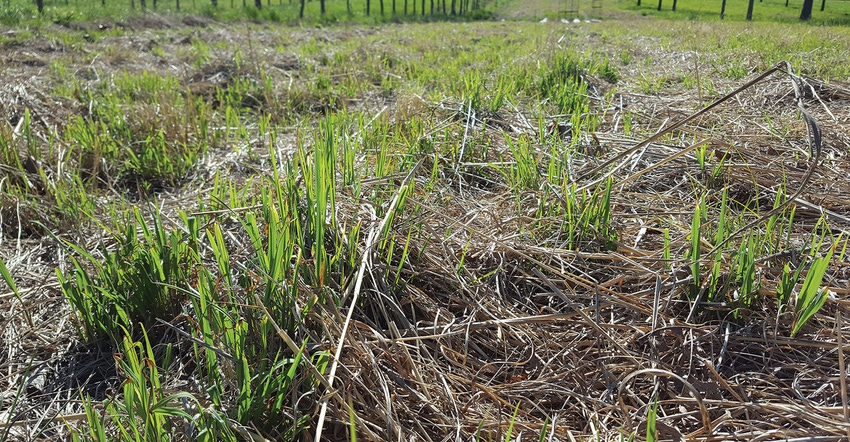May 23, 2019

Native warm season grasses have become very popular recently. One reason for that popularity may be their successful contribution to the overall sustainability of grassland agriculture in the southeastern United States.
“Native warm season grasses can be a success story, with a few caveats,” said Dirk Philipp, University of Arkansas System Division of Agriculture associate professor of forages.
The species and variety of grasses should be selected based on the needs and desires of the operation, Philipp said.
Big bluestem and indianagrass are suitable for grazing; switchgrass flourishes along creeks and wet spots on the farm. Eastern gamagrass can be used for haying in wetter laying meadows.
Philipp said there are at least three great reasons to consider native warm season grasses, along with proven ways to get the most out of them.
The first is additional grazing during the summer. The grasses provide reliable grazing, but only between mid-May and early September at the latest.
“Continuous stocking should be avoided as repeated grazing of new leaves weakens stands long-term,” Philipp said. “Split grazing into two to three cycles with four weeks’ rest in between, provided there is enough rainfall to generate regrowth.”
Sensitive to close grazing
Native warm season grasses are sensitive to close grazing, so animals should be removed if canopy height reaches 4 to 6 inches.
Another reason to cultivate native warm season grasses is to support additional wildlife habitat. These grasses are only infrequently mowed or grazed, so they provide better habitat value for certain bird species and small mammals.
“Because grazing is not going to be as prolonged as on fescue or bermudagrass pastures, NWSGs are ideal for a multi-use approach,” Philipp said. He recommended planting in less-intensively used areas such as along creek banks, wetter areas, and as buffer at the toe slope of pastures.
Finally, there are fewer input costs in the long run.
“NWSGs are relatively expensive to establish per unit area,” Philipp said. “Because only relatively small acreages are being established, producers can choose to start small and increase acreages over time.”
However, he said, money is saved long-term on fertilizer, because the native warm season grasses don’t require as much fertilizer as other grasses.
Before establishment, Philipp recommends testing the soil to makes sure pH and other nutrient levels are in check. Don’t apply nitrogen during the establishment year — once established, only limited amounts of nitrogen are needed to keep these grasses in a certain dry matter production range.
If native warm season grasses are being planted as buffers on toe slopes, they will filter and take up large amounts of nutrients during runoff events, Philipp said.
About the Author(s)
You May Also Like




